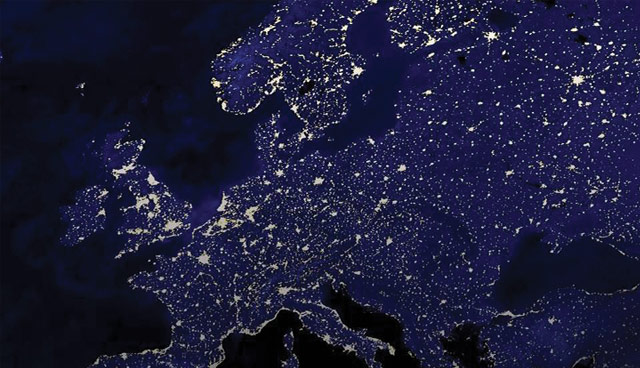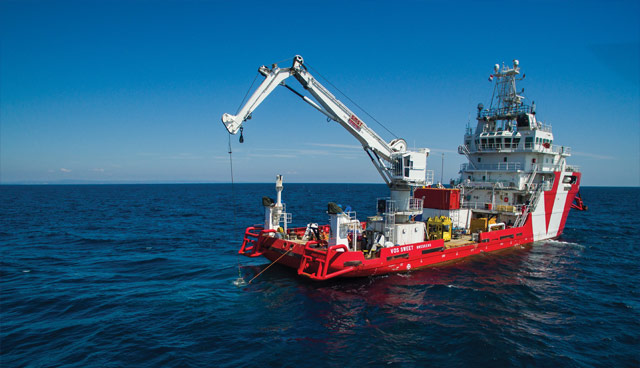EirGrid: Connecting Ireland’s electricity to Europe

EirGrid develops and operates the national electricity grid, so that everyone has power when and where they need it. It also operates the Single Electricity Market, which is now coupled with mainland Europe thus allowing pan European trading of electricity, which will increase competition and reduce prices in the market, writes EirGrid Group Chief Executive Mark Foley.
Interconnectors that link our electricity system with other countries play a key role in achieving the goals of enhancing energy security, increasing competition and facilitating greater levels of renewables on the power system. Indeed, as Ireland’s electricity transmission system operator (TSO), we are statutorily obliged to explore and develop opportunities for further interconnection.
There are already two interconnectors linking the Republic of Ireland, Northern Ireland and British grids and, as an island system, we continue to assess the ongoing potential opportunities for further interconnection. This is in keeping with the European Commission’s Strategy which views a well-integrated European energy market as essential to achieving energy and climate objectives.
Connecting Europe’s electricity systems will allow the EU to boost its security of electricity supply and to integrate more renewables into energy markets, which is key in the fight against climate change.
When a power plant fails, or during extreme weather conditions, EU countries need to be able to rely on their neighbours to import the electricity they need. Without interconnection infrastructure it is impossible to buy and sell electricity across borders. Connecting isolated electricity systems is therefore essential for security of supply.
The EU stipulates that member states should have enough interconnector capacity to allow for 15 per cent of the electricity produced in their country to be transported across its borders to neighbouring countries. EirGrid is keen to achieve and potentially surpass this target by 2030, particularly in the context of emerging Government policy which is expected to set a target of 70 per cent of electricity from renewables on the power system by 2030, a major step up from our 2020 ambition of 40 per cent.
There has been excellent progress in advancing interconnection between Ireland and Britain since the turn of the millennium. The East West Interconnector (EWIC), a high-voltage direct current submarine cable, was the first interconnector developed by EirGrid.
At 262 kilometres in length, with 186 kilometres beneath the Irish Sea, the cable has a power rating of 500 megawatts (MW). It was one of the largest schemes of its kind in the world at the time and went live in 2012.
Mutual Energy’s Moyle Interconnector links Northern Ireland with Scotland and provides a further 500 MW of capacity. It has been in operation since 2001.
Moyle and EWIC allow the trading of electricity between the wholesale electricity markets of Ireland, known as the Single Electricity Market (SEM), and Britain by allocating capacity on the interconnectors through a series of auctions.
The SEM underwent a major transformation last year, formally coupling the all-island electricity market with mainland Europe. It represented the biggest change for the all-island energy industry since de-regulation and the establishment of the original all-island market in 2007.
The transition to the new SEM was driven by European energy policy. The new market arrangements are designed to integrate the SEM with European electricity markets, making optimal use of cross-border interconnectors.
This, according to the SEM Committee, which regulates the all-island market, will “deliver increased levels of competition which should increase competition as well as encouraging greater levels of security of supply and transparency”.
It is against this background that we are currently looking to develop an interconnector linking Ireland with France, the Celtic Interconnector. This would be the first direct connection between Ireland and Continental Europe.

“The SEM underwent a major transformation last year, formally coupling the all-island electricity market with mainland Europe. It represented the biggest change for the all-island energy industry since de-regulation and establishment of the original all-island market in 2007.”
Its origins date back to 2009 when we published the Interconnection Economic Feasibility Report. It assessed the relative economic benefits of interconnection between Ireland and Great Britain or France. It analysed a wide range of scenarios to identify drivers for greater interconnection and how this would impact power system costs. The report concluded that building an interconnector with France was viable and desirable from a range of perspectives.
Since 2011, we have been working in close partnership with our TSO counterpart in France, Réseau de Transport d’Électricité (RTE), to develop the Celtic Interconnector. In 2013, the Celtic Interconnector was designated a Project of Common Interest (PCI) by the European Commission. This recognises the project’s importance in terms of achieving the commission’s energy and climate change objectives.
PCI designation places a significant emphasis on public participation and environmental assessment. It also provides significant funding opportunities for the project and streamlines the consenting process. To date, the commission has invested €3.9 million in funding project studies and analysis and a further €4 million has been approved for further studies.
In April the national regulatory authorities in both France and Ireland published a report into how the project could be funded. The report concluded that an interconnector between the two countries would be beneficial for electricity stakeholders in Ireland, France and in Europe.
In particular, the regulatory authorities found that the benefits to Ireland are significant, given the isolation of the Irish electricity market, and the potential impact of Brexit. The report concludes that support should be shared between EirGrid and RTE, with 65 per cent of investment costs being allocated to Ireland and 35 per cent to France.
“EirGrid applies a six-step approach to developing large-scale energy projects, such as the Celtic Interconnector. This approach is based on engaging stakeholders early and often in the lifecycle of a project.”

We welcome the report’s findings. Our studies have also identified a number of benefits of the project for Ireland, France and for Europe. They are:
• Ability to import and export 700 MW of electricity, the equivalent of supplying power to around 450,000 homes;
• Enhance security of supply for Irish electricity users, and reduce Ireland’s electrical isolation as it will provide Ireland’s only direct energy connection to an EU Member State once the United Kingdom leaves the EU;
• Increase competition and apply downward pressure on the cost of electricity to consumers in Ireland and France;
• Facilitate Ireland’s transition to a low carbon energy future, by ensuring that renewables from Energy Ireland’s power system can be exported at times of low demand, making our grid more sustainable into the future;
• A direct fibre optic communications link between Ireland, France and wider Europe; and
• Enhance Ireland’s capacity to directly contribute to and be part of the Energy Union.
EirGrid applies a six-step approach to developing large-scale energy projects, such as the Celtic Interconnector. This approach is based on engaging stakeholders early and often in the lifecycle of a project.
The Celtic Interconnector project is currently in a consultation phase, on step three of this approach. We are looking for feedback on a shortlist of three proposed landfall locations on the coast of East Cork and six proposed location zones for an electricity converter station, also in East Cork.
We have completed a series of public information meetings in East Cork, taking care to ensure that we are meeting with the communities living close to the project. We are also encouraging feedback via our online feedback form, by email, post or directly with our Community Liaison Officer based in Cork.
The project has just passed the midway point in our six-step approach to developments. When this phase of consultation has concluded, and the feedback analysed, we will confirm the shortlists for converters station zones and landfall sites.
Once these are confirmed, each will be subjected to further assessments. This will determine where exactly we should build the converter station site and the optimum landfall location, and potential route options for the land circuits. We hope to be in a position to confirm these locations before the end of 2019.
In keeping with our approach to grid development, these routes will not be confirmed until feedback has been gathered through a round of public consultation.
As this project is deemed Strategic Infrastructure Development, a planning application will be made to An Bord Pleanála. We expect to make this submission, and secure consent by 2021. Construction is expected to take place in 2023 and energisation in 2026.
This is one of the most important pieces of national infrastructure in the next decade and represents an estimated investment of approximately €1 billion at today’s prices.
It will go a long way towards ensuring a secure supply of electricity for Ireland, a low carbon power system for the island of Ireland and will support future economic growth over the next decade and beyond.

W: www.eirgridgroup.com





